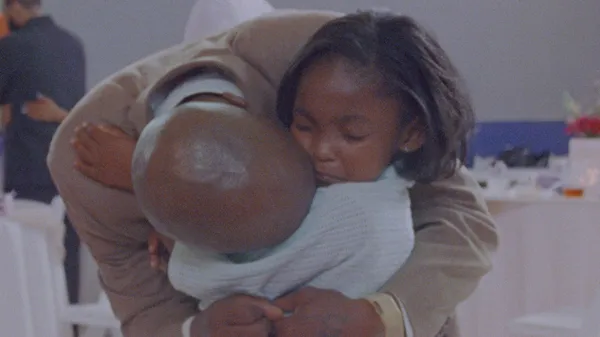Eye For Film >> Movies >> Daughters (2024) Film Review
Daughters
Reviewed by: Jennie Kermode

The father/daughter dance is a distinctly American phenomenon which is hard to get one’s head around as an outsider. There’s something uncomfortably proprietary about it, if not outright creepy. For this reason, Angela Patton and Natalie Rae’s documentary may struggle to travel internationally despite its several award nominations. It’s not as exceptional a work as those awards might suggest, but it is important insofar as it deals with a neglected subject – and one which, though likewise culturally specific, is perhaps all the more obvious in its nature from a distance.
The particular father/daughter dance with which this film concerns itself is more meaningful than most because it’s the only opportunity for these parents and children to see each other at all. The men are incarcerated in a Washington DC prison. The US not being a signatory to the Universal Declaration of Human Rights, there is no legal recourse for their family members. Private interest in the sector being what it is, they have to follow arbitrary rules put in place by unaccountable corporations. Where in-person visits remain, they involve sitting on opposite sides of a barrier, viewing one another through screens, and that only very occasionally, upon payment of a fee. The girls have no opportunity to make physical contact with their fathers at all.

What happens to girls who grow up without fathers? The statistics are not good – especially if they are also poor and on the less fortunate side of the US’ racial divide. They are more likely to develop a range of common illnesses, more likely to drop out of school and more likely to become homeless. They have over six times the average girl’s risk of getting into an abusive relationship. Daughters doesn’t set this out in detail in part, one suspects, because it assumes that viewers will already be aware of it on some level. What Patton and Rae are interested in is finding out if one special encounter can turn some of these risks around.
That encounter – that dance, which the men can only earn a right to by first completing a ten week coaching programme – is organised by youth development nonprofit Girls For A Change. In the early part of the film we briefly see their work in the community, where they bring together women and girls who have been left behind (one in three African American men will be imprisoned at some point in his lifetime) and run activities aimed at boosting their confidence and self-respect. Angela, the group’s founder, talks about the importance of discussing girl power in a meaningful way. For most of the film, however, we focus on four of the girls themselves.
First to be introduced, and making by far the biggest impression, is five-year-old Aubrey, the kind of kid so naturally charismatic that she could sell a film all by herself. In her introductory segment, she has a lot to say for herself, showing us her beautiful tropical fish and assuring us that she knows all her ten times tables (rare at that age). Numbers are important to her because they help her to think about how her dad, Keith, will be away for another seven years; help her to break that down into terms she can reckon with. Her story forms the emotional core of the piece, which includes a lengthy follow-up shot over the course of years.
The other girls include Santana, who, at ten, is old enough to understand that her father, Mark, has a responsibility for her, and to resent his repeated failings, which have left her alone with her troubled mother. Razia, 15, really misses her father Alonzo; she’s struggling to focus at school and has had suicidal thoughts. Ja’Ana, at a similar age, doesn’t remember her father, Frank, at all, and is nervous about what the dance will mean. We do get to see it, and to see how it has been crafted to appeal to the girls in light of their different ages, and to appreciate some of its emotional complexity. For the most part the film comes across as a celebration of this moment as a light in the darkness, but it will likely leave some viewers additionally uncomfortable. One could equally well read it as the children being exploited, in some cases much to their detriment, in order to emotionally blackmail the men.
That it serves as an indictment of the US penal system should go without saying. That’s not much of a challenge. The message we are given is that girls like these need to learn to recognise the unfairness of it all, the racism to which their fathers, and they, will always be subject, and yet make the effort to love and assert themselves anyway. That is, perhaps, a necessary approach, yet one cannot help but be moved by the look in Santana’s eyes which says that it comes up short.
Reviewed on: 05 Feb 2025


















